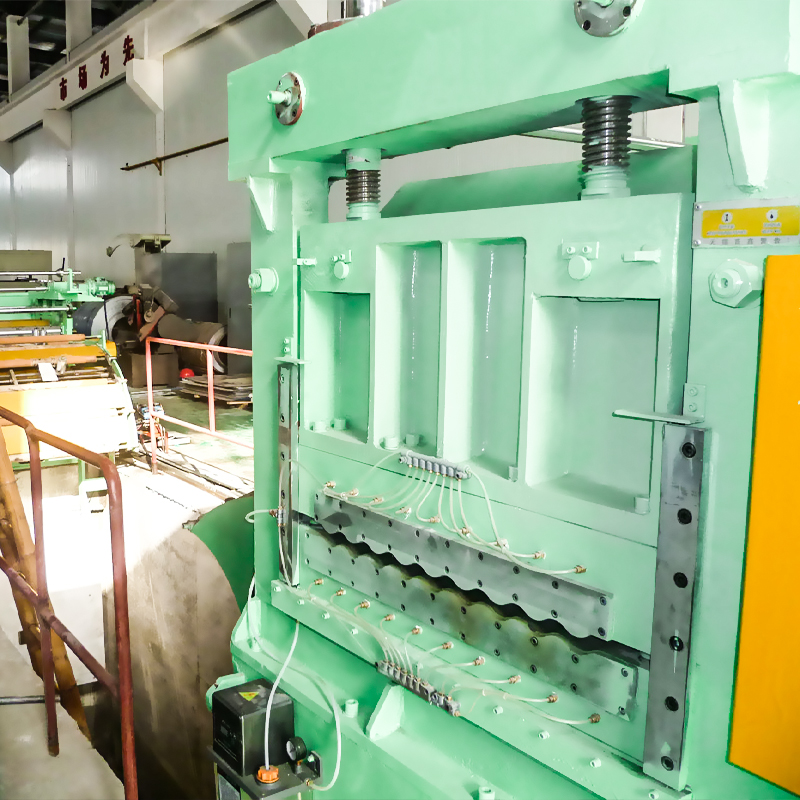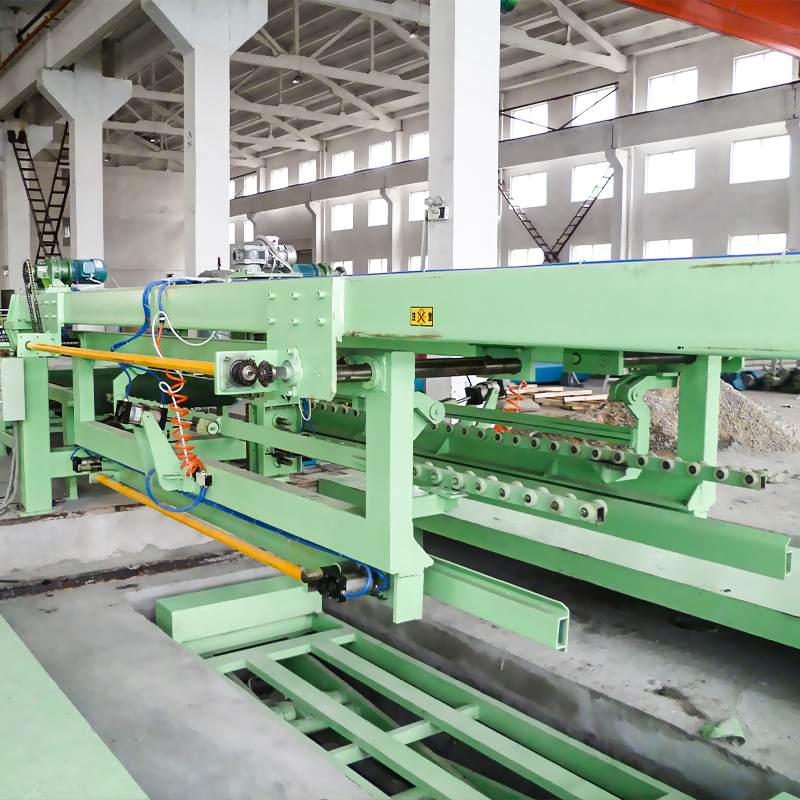ভূমিকা
Efficiency is everything in manufacturing. A highly efficient roll forming machine can increase production speed, reduce waste, and lower operational costs. But what factors influence efficiency? How can manufacturers optimize their roll forming processes?
In this guide, we’ll cover:
✅ Key factors affecting roll forming machine efficiency
✅ Best practices to improve production speed and accuracy
✅ Automation and AI in roll forming efficiency
✅ How to reduce waste and increase machine lifespan
✅ Common efficiency issues and solutions
Let’s dive into the strategies that will maximize the efficiency of your roll forming machine and boost your production output!
Key Factors Affecting Roll Forming Machine Efficiency
Several factors determine how efficiently a roll forming machine operates. Addressing these factors can significantly improve performance and reduce downtime.
1. Material Quality & Consistency
- High-quality raw materials reduce roller wear and misalignment issues.
- Uniform thickness prevents forming defects and uneven profiles.
2. Machine Calibration & Maintenance
- Regular calibration ensures precise profile bending and cutting.
- Lubrication schedules prevent roller wear and overheating.
3. Production Speed Optimization
- Running at the optimal speed prevents material defects.
- Adjusting forming pressure ensures precise shaping without excessive force.
4. Automation & AI Integration
- PLC & CNC automation improve cutting accuracy and reduce manual errors.
- AI-powered defect detection prevents waste by identifying issues in real-time.
5. Operator Training & Skill Level
- Well-trained operators can quickly troubleshoot issues.
- Proper handling reduces machine downtime and increases output consistency.
Pro Tip: Combining automation with preventive maintenance can increase roll forming efficiency by 40%!
Best Practices to Improve Roll Forming Machine Efficiency
Improving efficiency requires smart process management, automation, and regular maintenance. Here are the best ways to optimize your roll forming machine.
1. Optimize Material Feeding & Alignment
✅ Use precision material guides to ensure straight feeding into rollers.
✅ Avoid coil misalignment, which leads to irregular profiles.
✅ Implement automatic material feeding systems for consistent input speed.
2. Upgrade to Servo Motors for Better Speed Control
✅ Servo-driven motors allow precise speed adjustments, reducing roller wear.
✅ Energy-efficient motors lower power consumption and operating costs.
3. Implement AI-Based Defect Detection
✅ AI cameras monitor forming accuracy in real time.
✅ Automated defect detection reduces material waste by stopping production when issues arise.
4. Reduce Setup & Changeover Time with CNC Automation
✅ CNC-controlled profile adjustments eliminate manual setup delays.
✅ Reducing changeover time increases production uptime.
5. Use IoT for Real-Time Machine Monitoring
✅ IoT sensors track machine performance and maintenance needs.
✅ Prevents breakdowns by predicting failures before they happen.
Pro Tip: An automated roll forming system can produce up to 50 meters per minute—doubling efficiency compared to manual systems!

Automation & AI: The Future of Roll Forming Efficiency
দ্য integration of AI, IoT, and automation is transforming roll forming machines into high-speed, precision-driven production systems.
How AI & Automation Improve Efficiency
| Technology | Efficiency Benefit |
|---|---|
| AI-Based Defect Detection | Reduces scrap rates by identifying defects early |
| IoT-Enabled Machine Monitoring | Provides real-time diagnostics and predictive maintenance |
| Servo-Driven Roll Forming | Improves speed control and reduces energy consumption |
| CNC Automation for Quick Profile Changes | Reduces setup time and increases production uptime |
| Automated Lubrication Systems | Extends roller lifespan and prevents overheating |
AI-powered predictive maintenance can reduce machine downtime by 50% and increase overall efficiency by 30%!
How to Reduce Waste in Roll Forming Production
Material waste increases production costs and reduces efficiency. Fortunately, smart process optimization can minimize scrap while maximizing output.
1. Use High-Quality Raw Materials
✅ Low-quality materials increase roller wear and forming defects.
✅ Opt for uniform-thickness, rust-free steel or aluminum.
2. Optimize Cutting Accuracy
✅ Use servo-driven cutting systems for precise profile lengths.
✅ Ensure blade sharpness to prevent burrs and irregular edges.
3. Implement Smart Defect Detection Systems
✅ AI-based real-time defect detection reduces scrap rates.
✅ Identifies issues before production waste occurs.
4. Reduce Setup Errors with CNC Automation
✅ CNC-controlled profile settings prevent incorrect bending or shaping.
✅ Reduces misalignment issues caused by manual adjustments.
Pro Tip: A well-optimized roll forming machine can reduce material waste by up to 20%!
Common Efficiency Issues & Solutions
Even with modern automation, roll forming machines can experience efficiency losses. Here’s how to diagnose and fix common efficiency problems.
| Issue | Cause | Solution |
|---|---|---|
| Slow Production Speed | Improper roller settings, excessive friction | Re-calibrate rollers, apply lubrication |
| High Scrap Rate | Defective material, poor cutting accuracy | Use high-quality materials, upgrade cutting system |
| Frequent Machine Downtime | Lack of preventive maintenance | Implement IoT-based predictive maintenance |
| Excessive Energy Consumption | Old motor systems, inefficient forming process | Upgrade to servo-driven motors |
| Inconsistent Profile Dimensions | Misaligned rollers, uncontrolled material feeding | Realign rollers, optimize material feeding system |
Pro Tip: Upgrading to a servo-driven system can reduce energy consumption by 25% while maintaining high-speed production!
Advanced Strategies to Improve Roll Forming Machine Efficiency
To maximize roll forming machine efficiency, manufacturers must adopt advanced strategies that go beyond basic maintenance and automation. The following methods can further optimize production speed, accuracy, and overall performance.
1. Implement Smart Roll Forming Line Layout Design
- Optimize the factory layout to reduce material handling time.
- Use automated conveyor systems to transport raw materials efficiently.
- Reduce bottlenecks by ensuring a smooth workflow between forming, cutting, and packaging stations.
2. Utilize High-Precision Tooling & Rollers
- Invest in hardened, precision-ground rollers to improve forming accuracy.
- Use coated rollers (chrome or ceramic) to reduce friction and extend lifespan.
- Regularly check roller tolerance to ensure consistent profile output.
3. Optimize Forming Speed Without Sacrificing Quality
- Gradually increase machine speed to find the optimal balance between speed and accuracy.
- Utilize servo-driven motors to maintain consistent forming pressure at high speeds.
- Monitor profile integrity through AI-based quality control scans.
Pro Tip: Optimizing forming speed while maintaining precision can improve output by 20-30%.
Reducing Energy Consumption in Roll Forming Machines
Energy efficiency is a major factor in roll forming operations. Reducing energy consumption lowers operational costs and improves sustainability.
Best Practices to Reduce Energy Usage
| Strategy | Efficiency Benefit |
|---|---|
| Use Servo Motors Instead of Traditional Motors | Reduces power consumption by 25% |
| Install Automatic Shut-Off Systems | Saves energy during idle machine time |
| Upgrade to LED Lighting in the Production Area | Reduces electricity costs for factory lighting |
| Implement Variable Frequency Drives (VFDs) | Optimizes motor speed, reducing energy waste |
| Use High-Efficiency Lubricants to Reduce Friction | Lowers energy loss due to mechanical resistance |
Pro Tip: A well-optimized roll forming machine can reduce energy costs by up to 30%!
AI & IoT in Roll Forming: The Future of Smart Manufacturing
Artificial Intelligence (AI) and Internet of Things (IoT) technology are revolutionizing roll forming efficiency. These technologies provide real-time insights, predictive maintenance, and automated quality control.
How AI & IoT Improve Roll Forming Efficiency
| Technology | Efficiency Benefit |
|---|---|
| AI-Based Defect Detection | Reduces waste by detecting defects in real-time |
| IoT-Enabled Machine Monitoring | Tracks performance and schedules preventive maintenance |
| Automated Profile Adjustments | Reduces downtime when switching profiles |
| Smart Data Analysis for Production Optimization | Identifies inefficiencies and suggests improvements |
Pro Tip: AI-powered predictive maintenance can reduce machine downtime by 50% and increase overall efficiency by 30%!

How to Minimize Downtime in Roll Forming Machines
Downtime is one of the biggest profit killers in roll forming production. By implementing preventive strategies, manufacturers can ensure continuous production with minimal interruptions.
Key Strategies to Reduce Downtime
✅ Schedule Preventive Maintenance – Perform monthly machine inspections to catch issues early.
✅ Keep a Spare Parts Inventory – Having extra rollers, bearings, and cutting blades prevents long repair delays.
✅ Train Operators for Quick Troubleshooting – Well-trained staff can identify and fix minor issues before they escalate.
✅ Use AI-Based Predictive Maintenance – AI analyzes machine wear and performance, predicting failures before they occur.
Pro Tip: Regular maintenance reduces unplanned downtime by up to 75%!
Common Efficiency Issues & Their Solutions in Roll Forming Machines
Even the most advanced roll forming machines can experience efficiency losses. Below are some frequent efficiency challenges and how to fix them.
| Issue | Cause | Solution |
|---|---|---|
| Slow Production Speed | Improper roller settings, excessive friction | Re-calibrate rollers, apply lubrication |
| High Scrap Rate | Defective material, poor cutting accuracy | Use high-quality materials, upgrade cutting system |
| Frequent Machine Downtime | Lack of preventive maintenance | Implement IoT-based predictive maintenance |
| Excessive Energy Consumption | Old motor systems, inefficient forming process | Upgrade to servo-driven motors |
| Inconsistent Profile Dimensions | Misaligned rollers, uncontrolled material feeding | Realign rollers, optimize material feeding system |
Pro Tip: Upgrading to a servo-driven system can reduce energy consumption by 25% while maintaining high-speed production!
FAQ: Roll Forming Machine Efficiency Optimization
1. How can I increase the speed of my roll forming machine?
- Upgrade to servo-driven motors for better speed control.
- Ensure rollers are properly aligned and lubricated to reduce friction.
2. What is the best way to reduce material waste in roll forming?
- Implement AI-powered defect detection to catch issues before they become defects.
- Use high-quality, uniform materials to prevent forming inconsistencies.
3. How does CNC automation improve roll forming efficiency?
- CNC automation reduces setup time and eliminates manual errors.
- Ensures consistent profile shaping with minimal adjustments.
4. Can IoT and AI really improve roll forming machine efficiency?
- Yes! IoT enables real-time performance tracking, while AI detects defects early.
- These technologies help prevent downtime and optimize production processes.
5. Where can I buy high-efficiency roll forming machines?
For custom-built, high-speed roll forming machines, visit WUXI SUNWAY MACHINERY CO., LTD.
Final Thoughts
Maximizing roll forming machine efficiency requires a combination of smart process optimization, automation, and preventive maintenance. By implementing AI-based defect detection, IoT monitoring, and CNC automation, manufacturers can increase speed, reduce waste, and enhance product quality.
WUXI SUNWAY MACHINERY CO., LTD is a leading global manufacturer of custom-built roll forming machines, offering advanced technology, expert support, and competitive pricing.
Want a high-performance roll forming machine? Contact us today!
